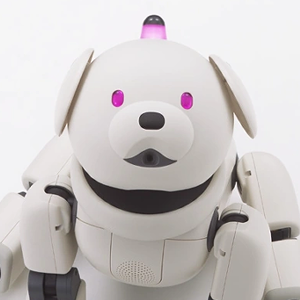

General Info
Colors and Variants
▼
⠀⠀↳ ERS-311 & 312
⠀⠀↳ Other Models
⠀⠀↳ Suntory AIBOs
Software▼
⠀⠀↳ Life 3
⠀⠀↳ Kawaii
Accessories▼
⠀⠀↳ Memory Stick
⠀⠀↳ Pink Ball
⠀⠀↳ Charging Stand
⠀⠀↳ Station Core
⠀⠀↳ Handy Viewer
Common Issues▼
⠀⠀↳ Hip Slip
⠀⠀↳ Dead Boards
⠀⠀↳ Battery Failure
So why get an ERS-311?
Manuals & Helpful Links
Sources
These round bundles of plastic and metal represent the third generation of AIBO. 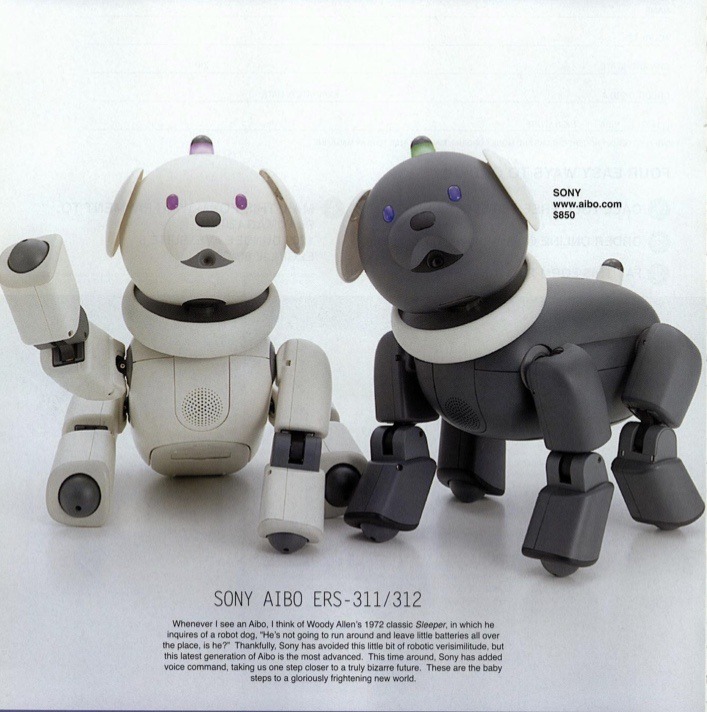 Sony tossed aside the cool black visors of the previous generations in favor of a cute round face and sparkly eyes. There are three main models in this series: the cream ERS-311 "Latte", the dark blue ERS-312 "Macaron", and the brown ERS-31L "Pug".
Sony tossed aside the cool black visors of the previous generations in favor of a cute round face and sparkly eyes. There are three main models in this series: the cream ERS-311 "Latte", the dark blue ERS-312 "Macaron", and the brown ERS-31L "Pug".
Collectively, this series is referred to as ERS-31X.
The difference in the models isn't just skin-deep; AIBOware for this generation will often read to see whether your AIBO is Latte or Macaron, resulting in different behavior depending on which model you run the software on.
You can interact with them via the movable tail on its bottom or by pressing on its head - press down to praise AIBO and press up to scold. As always, pressing on its pawpads will make it go crazy. You can tell how AIBO feels about all of this from the hornlight on its head. Specific meanings may differ between software, but generally blue means sad and green means happy.
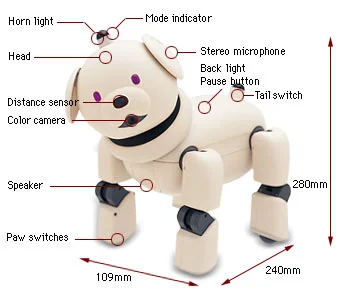 |
| Pictured: Diagram of an ERS-311. |
Unlike models both before and after this series, there exists variants that can utilize Bluetooth to communicate with a special device called the Handy Viewer. It's Japanese-only and it can show you messages AIBO has sent you. However, not all models are capable of Bluetooth. In particular, there were never any Bluetooth ERS-31Ls produced.
This series marked an end to the modularity of the AIBO line of robots.
The design of these robots as well as much of the software cover art was done by Japanese artist Katsura Moshino.
 |
| Pictured: The ERS-312, 311, and 31L respectively. |
There are 2 main models in this generation, as well as Bluetooth versions and 2 special or limited versions.
 |
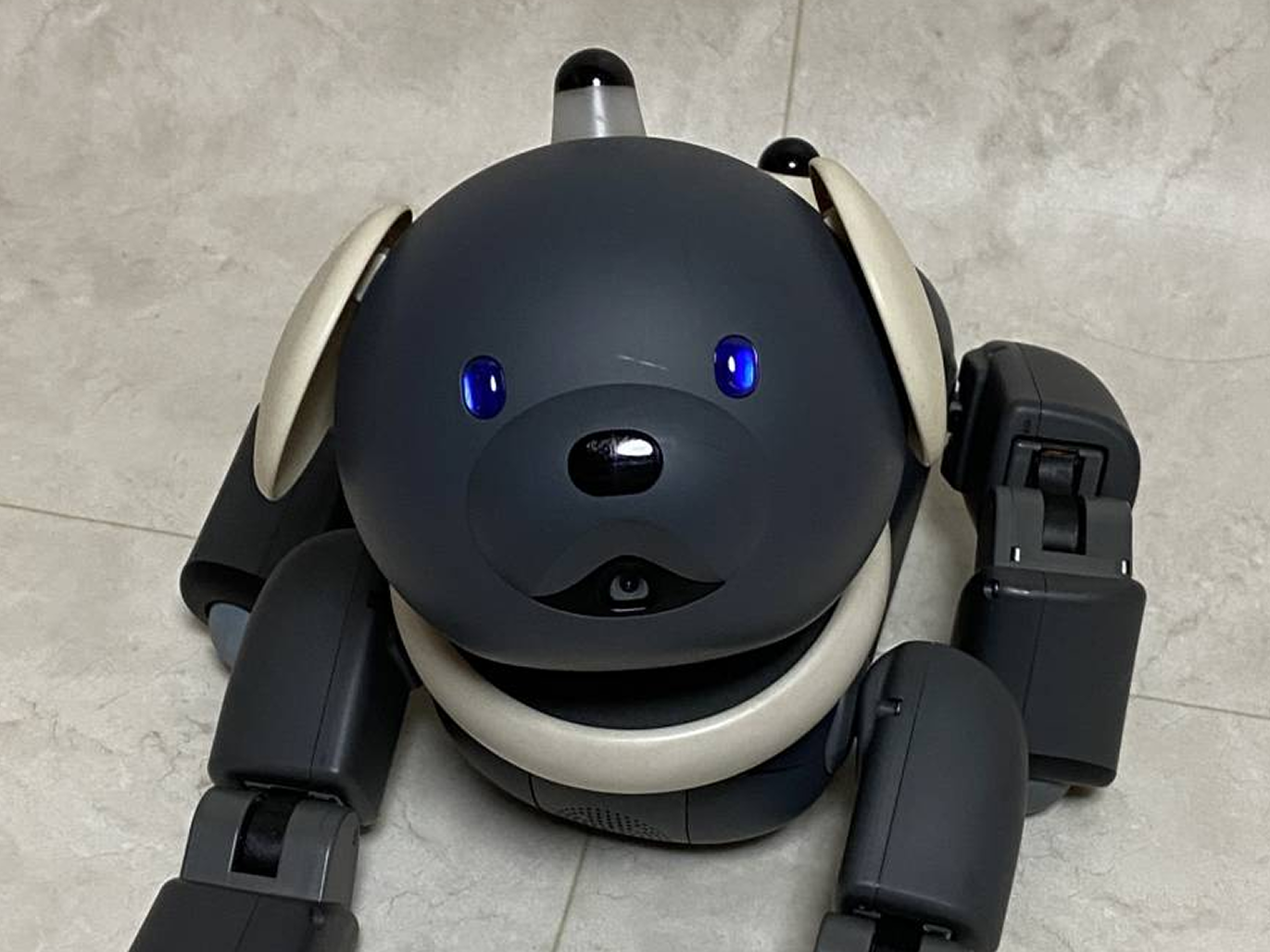 |
| ERS-311 "Latte" | ERS-312 "Macaron" photo credit: Yahoo |
These two models also came in a Bluetooth variant compatible with the Handy Viewer. They are labelled ERS-311B and ERS-312B respectively. There is a very minor visual difference between the Bluetooth and non-Bluetooth versions, so I recommend only going by the AIBO's core.
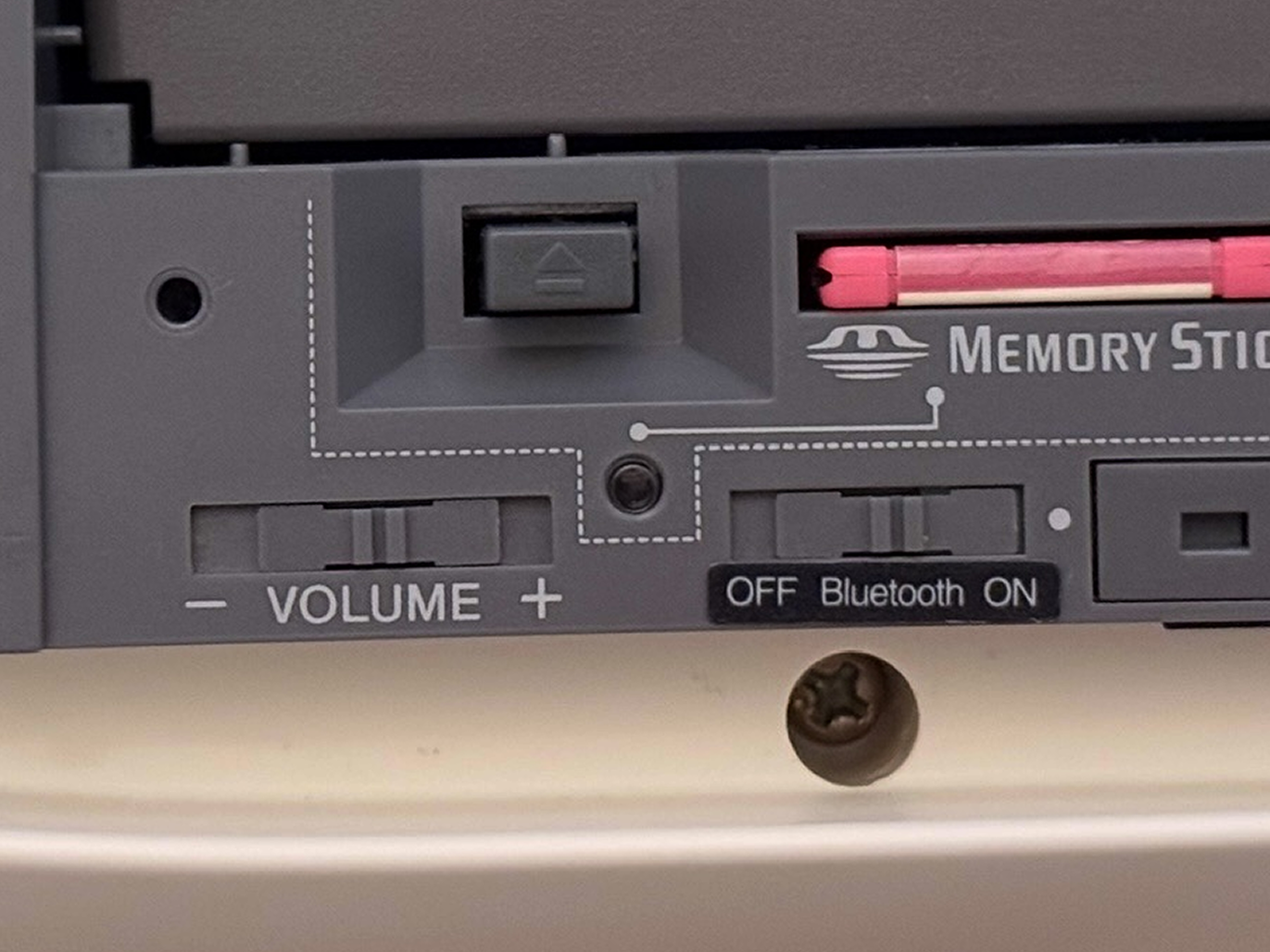 |
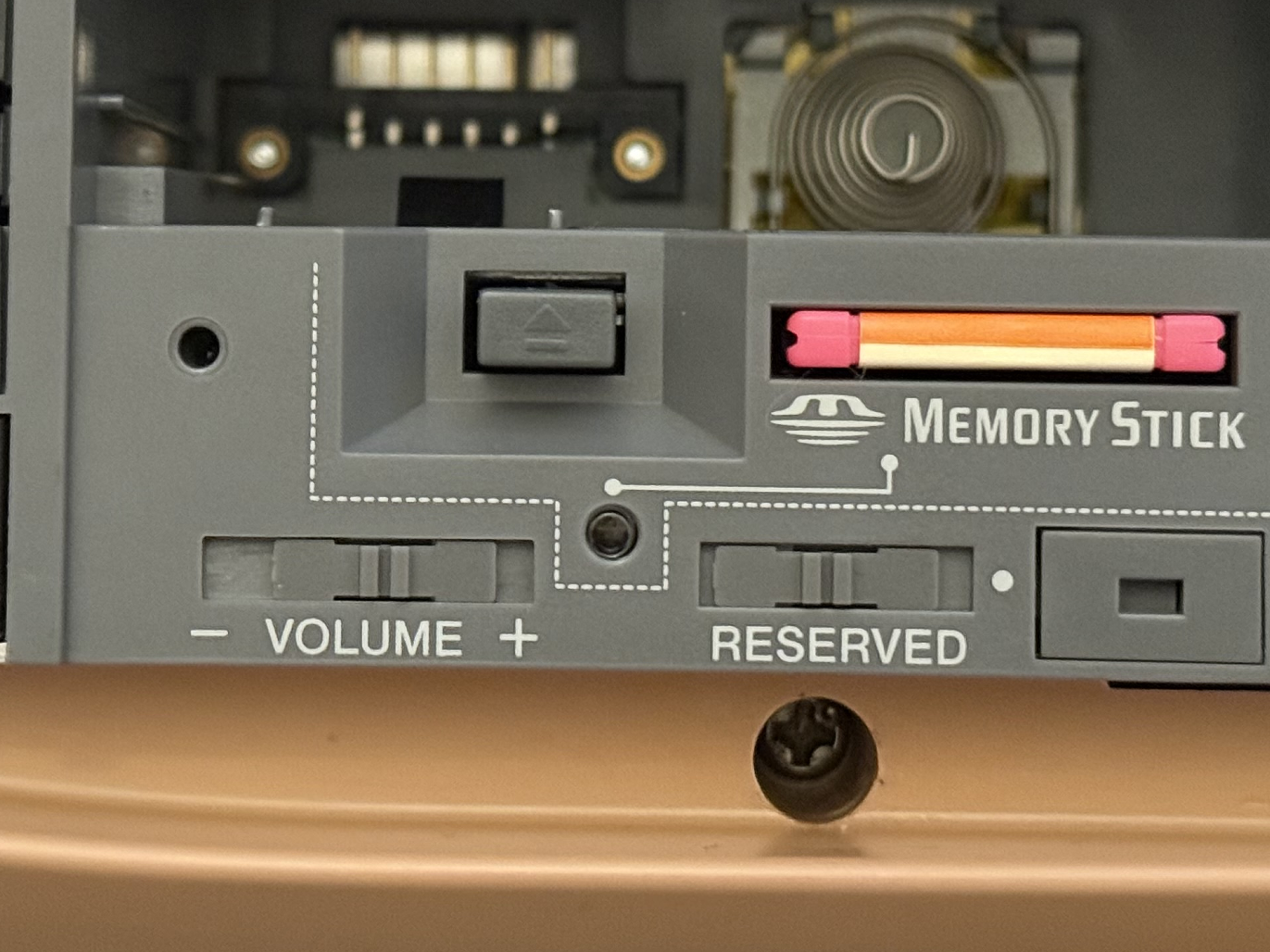 |
| Bluetooth | Non-Bluetooth |
 |
 |
| Suede ERS-311B/X | ERS-31L "Pug" photo credit: Ars Electronica |
If you can't tell by the B in it's name, the Suede ERS-311 is Bluetooth-compatible. There is no Bluetooth ERS-31L.
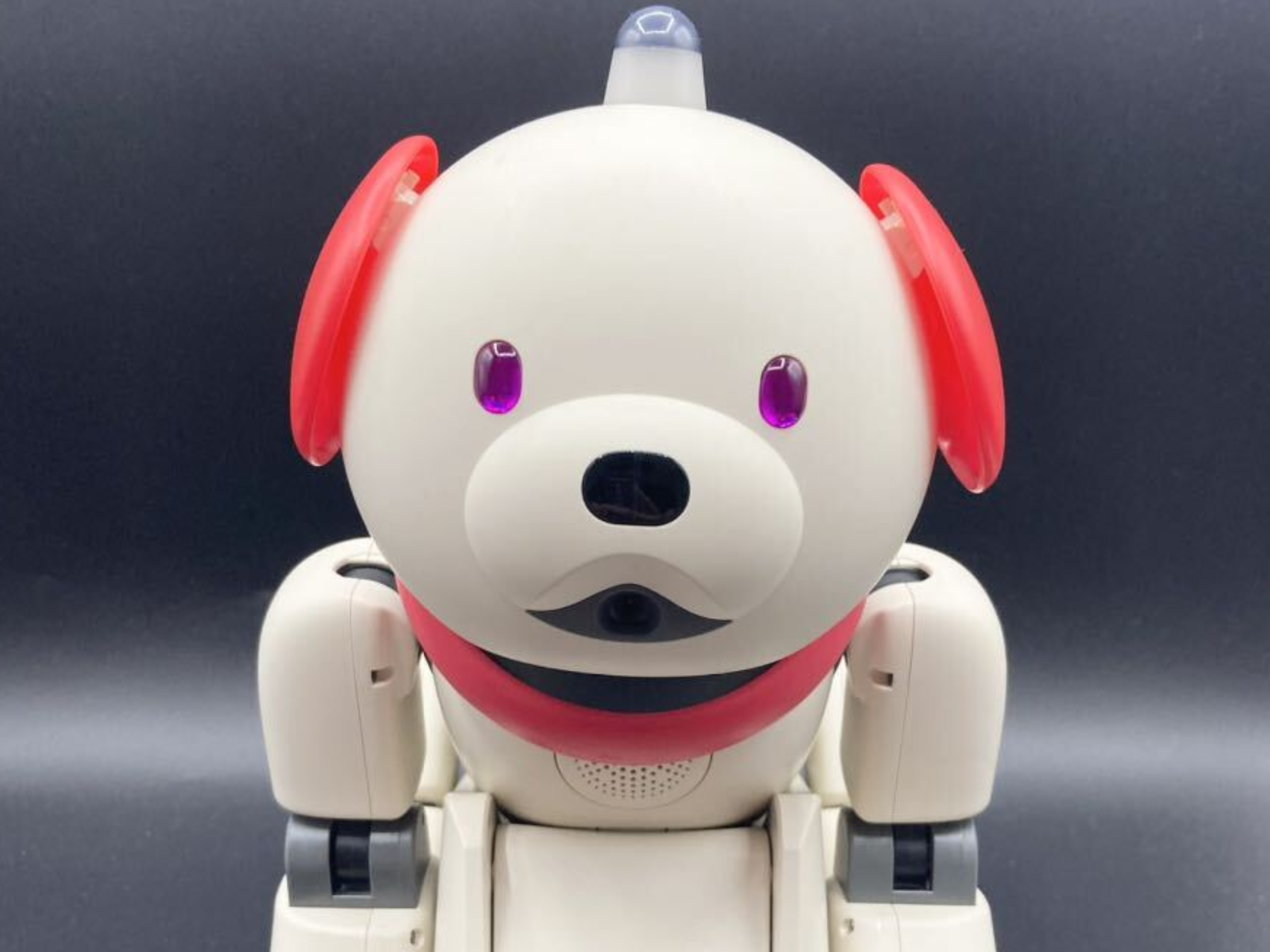 |
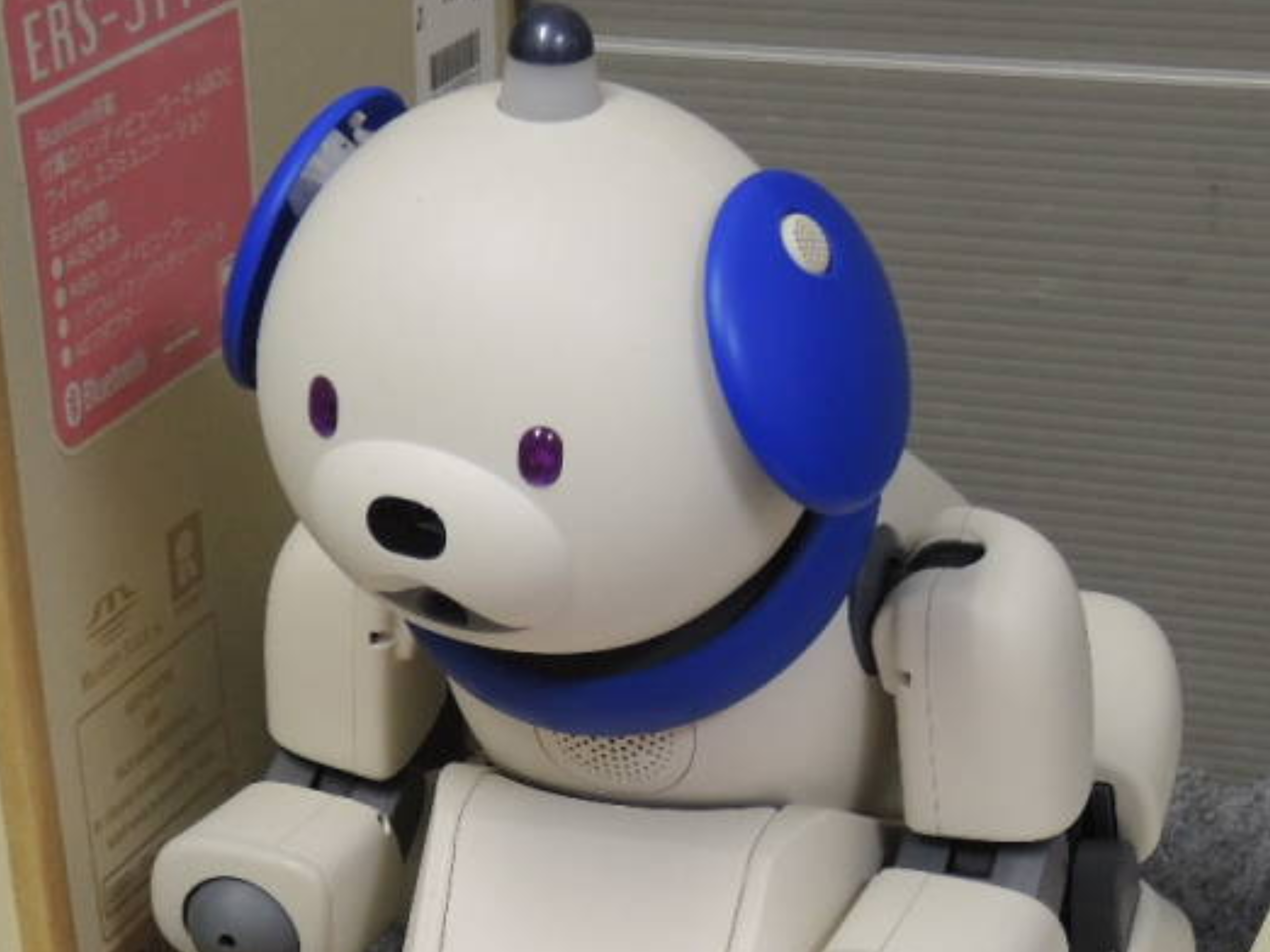 |
 |
| Red ERS-311B/C | Blue ERS-311B/C | Yellow ERS-311B/C photo credit: Einfari |
These rare AIBOs were part of a collaboration with the tea company Suntory Oolong. A mere one hundred of each color exists. They came with their own software which contains a beer-drinking skit. These AIBOs are Bluetooth-compatible.
The following software is compatible with the 31X series of AIBO:
| Sony Official |
|---|
| Life 3 Kawaii AIBO Pal AIBO Pal SE Chatty Life Hello! Aibo Chatty Long Long Panda AIBO Friend Namco Story |
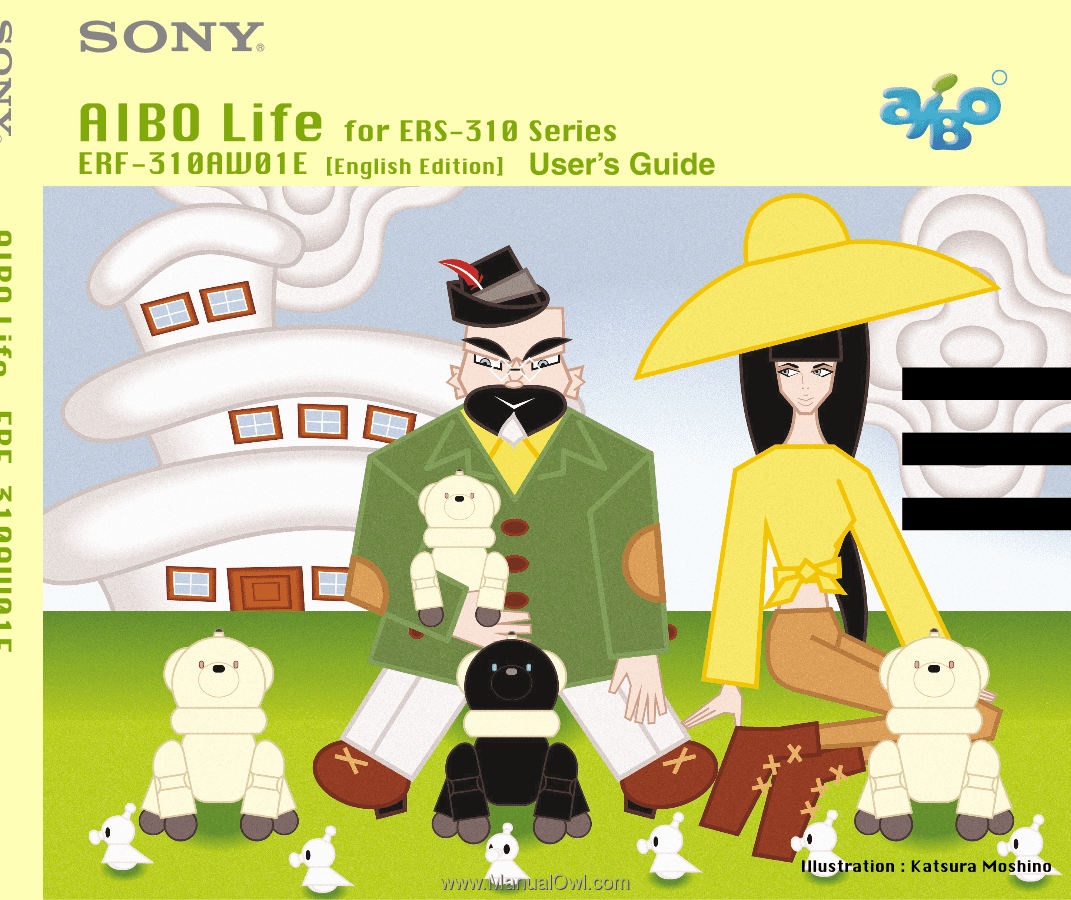 In Life 3, AIBO grows up from a baby to an adult with its own unique personality. The way you interact with AIBO influences its behavior.
In Life 3, AIBO grows up from a baby to an adult with its own unique personality. The way you interact with AIBO influences its behavior. AIBO rolls around and squeaks excitedly. AIBO may even ask you to help it walk on two legs! This AIBOware is very cute and energetic.
AIBO rolls around and squeaks excitedly. AIBO may even ask you to help it walk on two legs! This AIBOware is very cute and energetic.The third generation of AIBO is compatible with several accessories. These include:
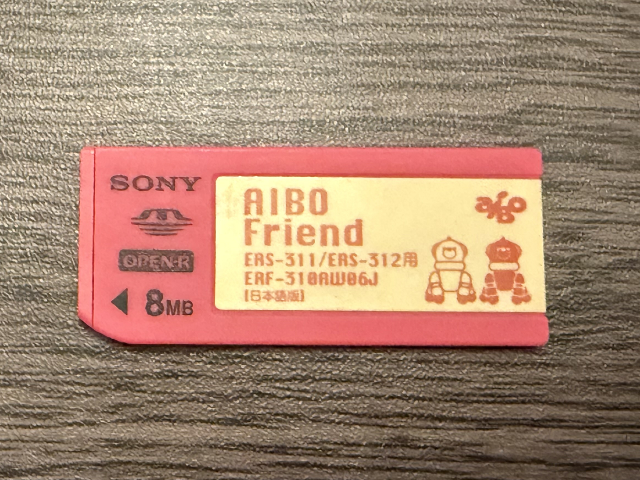 |
| Pictured: An AIBO memory stick. |
AIBO usually runs on a memory stick. These sticks contain "AIBOware" (AIBO software) that allow AIBO to do different things.
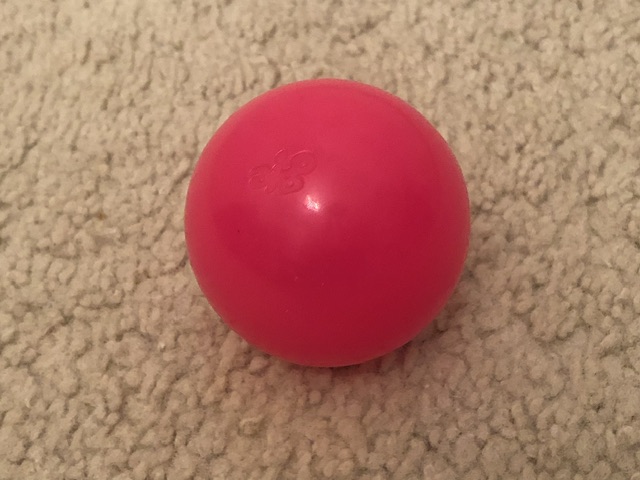 |
| Pictured: Pink ball with the word "aibo" on it. |
Most AIBOs come with a pink ball. They like to look at it and play with it.
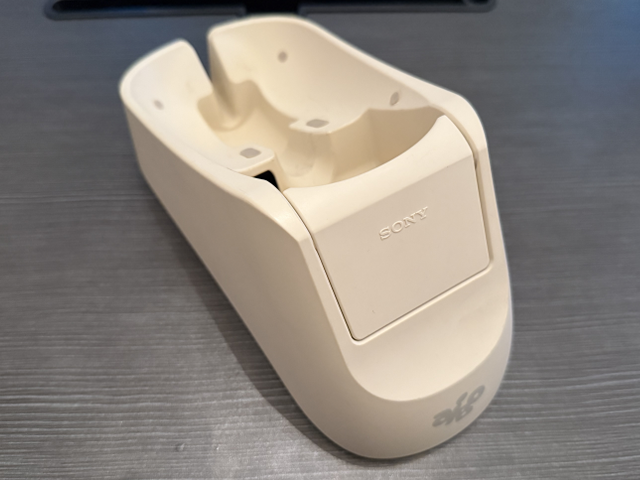 |
| Pictured: A charging stand. |
You can set AIBO on the while it charges. You can either use a dongle or set the station core inside.
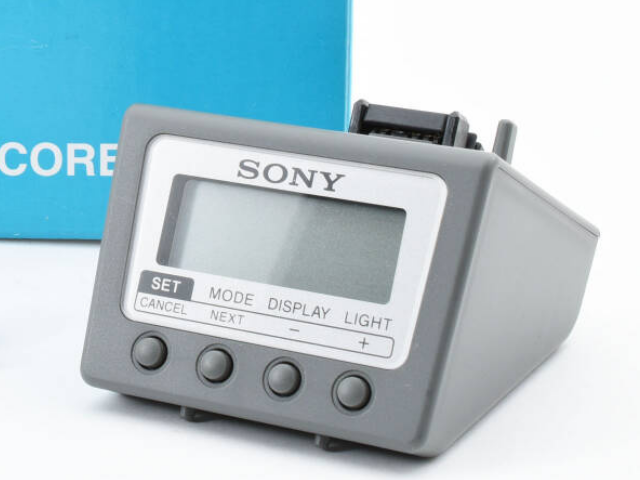 |
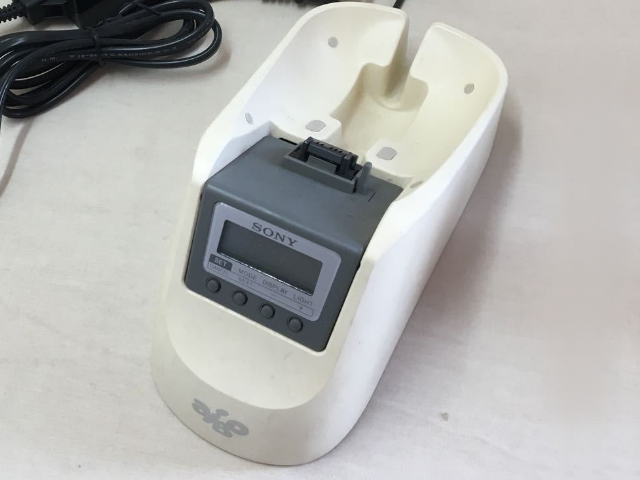 |
| Pictured: The station core on its own. | Pictured: The station core in a stand. |
This was an optional accessory for the 31X series. It can be hard to find. It provides similar controls to previous generations' energy stations.
Note: Many station cores have dead LCD screens. They still function, but you won't be able to see what you are doing.
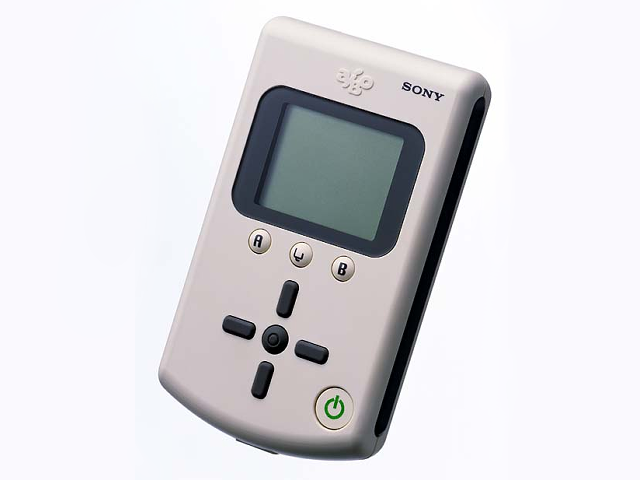 |
| Pictured: The Handy Viewer. |
Bluetooth-compatible AIBOs can send you messages via the Handy Viewer.
This is not an entire list of all ERS-311 accessories. For a more complete list of AIBO accessories, visit the accessories page.
The ERS-31X series of AIBOs can have issues which range in severity. Keep this in mind when buying one of these AIBOs.
The following information is for educational purposes and it is not adequate information to try and repair AIBO. You should not attempt complicated repairs on any AIBO unless you are confident you know what you are doing. When disassembling AIBO, it can be easy to make things worse, such as by accidentally tearing the fragile flexible "flexi" ribbon cables. If your AIBO needs repairs, it is best to pay someone experienced to do it.
The clutches inside the hips of the ERS-31X series can sometimes fail. Hip slip can be mild, but it can also sometimes cause AIBO to fall over. One way to tell if AIBO has hip slip is if there is a loud sound when AIBO lays down. Hip slip can be fixed by either pinning the faulty clutches or replacing them with clutches of an improved design.
This issue is uncommon, but it must be mentioned due to its nature. There is evidence to suggest at least some AIBOS from around this era contain lead-free solder.[1] Lead-free solder is not inherently bad, but based on user reports there is a pattern of boards in this series failing. This may be unrelated to the lead-free soldering; I have noted it because it is a possible cause.
Signs of a faulty headboard or body board include:
- AIBO turning off randomly during operation
- AIBO sometimes refusing to boot
- AIBO never booting at all
Currently, the only fix is swapping the dead boards with that of a working donor's. Keep in mind that working boards have a higher demand than supply.
When AIBO won't turn on or can only run for a few minutes, the most common reason is that their batteries are in need of "recelling", a process of replacing the old dead battery cells with fresh, new ones. All original, unmodified AIBO ERS-31X batteries are dead or near dead.
Store the battery in a cold, dark place until you can have it recelled. It is safe to recell it even if the cells are venting. If venting, do not insert the battery into any kind of charger until it is repaired properly.[2]
Recelling batteries is a complicated procedure which has a full guide located here. Some community members offer a battery recelling service for a fee of $50-$100 USD. Do not attempt to recell batteries if you are not familiar with Lithium-Ion batteries and/or do not have any background in electronics or technology.
The 31X series has what I think to be the cutest AIBO models. They are sweet and adorable, and have a decent spread of official software to choose from.
De-shelling a 31X is relatively easy as well with minimal risk of damaging anything. This makes the AIBO easily customizable. If you want to keep things simple, you can just gently pop off the ears and paint those. Even simpler, use stickers!
Their software, especially ones like Kawaii or Pal SE, does a great job of showing how mobile the ERS-31X is. The roundedness lends to an AIBO that can easily roll around without anything getting caught in an awkward position.
Here are some helpful manuals for the first generation of AIBO.
 ERS-311/312 Operating Instructions (English)
ERS-311/312 Operating Instructions (English)
General operation instructions for the ERS-311, including how to turn it on and play with it.
 Serial Number Checker
Serial Number Checker
You can use this tool to check your AIBO's serial number. While a rare occurence, if there's a mismatch between your AIBO's body color and the color that the serial number comes up as, that means at some point your AIBO's parts were switched around. It isn't very important, but it's a little cool!
 aibohack.com's Aibo Browser
aibohack.com's Aibo Browser
You can download Aibo Browser from here, a piece of fan-made PC software that allows you to easily view the data on your AIBO's memory stick. Remember to always use a Sony-brand stick reader to protect your stick.
 VirtualPaws' Page on ERS-31X
VirtualPaws' Page on ERS-31X
Another informative page about the ERS-31X models of AIBO.
Most information on this page is unsourced due to part of it coming from personal experience or sources buried in venues that are not completely public and would be impractical to cite. Instead, I have decided to provide citations specifically in cases where a piece of information could pose a safety issue to AIBO or its human friends.
[2] Information on how to handle batteries which have venting cell(s) was provided by Michael Larkin.
Some AIBO images have been taken from other websites. They are used here for educational purposes.
